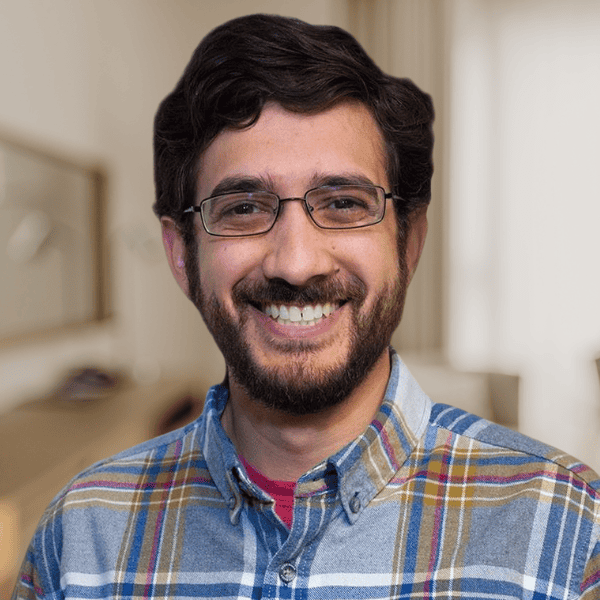Navigating the path from a PT student to a professional physical therapist is undeniably challenging. Yet, within these challenges lies an opportunity.
By fostering a clinical culture that actively seeks out and enjoys teaching, practices can bolster their productivity and recruitment efforts. Meanwhile, PT students will benefit from experiential learning and mentorship, working alongside seasoned professionals in the field. It’s a symbiotic relationship, but not always an easy one to cultivate.
In this blog, I’ll share some strategies for creating a productive student environment within your practice, ensuring a win-win situation for everyone involved.
Why Should Professionals Take an Interest in PT Students’ Success?
For PT students, the benefits of mentorship and experiential learning can’t be overstated! But as it turns out, the benefits go both ways–leaving a strong impression on the practice as well. In my experience, creating a robust student program can:
- Help with recruitment, alleviating staffing issues.
- Bring energy and new ideas to existing providers.
- Provide an extra pair of hands in various situations, relative to students’ experience level.
- Promote personal fulfillment and growth in your clinical staff.
From a leadership perspective, it’s a great opportunity to enhance your practice’s operations and reputation. The next question that comes up, then, is: How do you create buy-in among your clinical staff?
1. Convincing your staff to take more students.
A successful student program should help with staff productivity and make recruitment easier. It starts with a culture that wants to take students rather than dreads it.
Here are some helpful suggestions for practices that are planning to implement or expand their PT student program:
- Make teaching the norm. Setting expectations across the board is more successful than asking staff to opt in. It’s a realistic standard for all clinical staff with enough experience to take on a student at least once a year.
- Incentivize staff. Money is the obvious incentive, but that’s not the only perk that can sway your staff. Many clinics add students’ productivity to their Clinical Instructors’, helping them achieve internal metrics.
- Have an active Site Coordinator of Clinical Education (SCCE). The SCCE answers questions, places students, and handles most of the communication with schools. This takes a lot of the administrative work off Clinical Instructors.
2. Market to students and schools.
Once you’ve prepared your practice and your staff to take on students, you’ve won half the battle. But it’s not over yet! You’ve got to be ready to market your practice as a welcoming environment that will play a meaningful role in PT students’ curricula. That means demonstrating your value not only to students themselves, but also to PT schools.
Here are a few tips that can make your practice stand out:
Creating Positive Relationships with PT Schools
- Offer a stipend for final year rotations. Offering financial help is a great selling point from the schools’ perspective. In my experience, $500 is a typical amount.
- Seek out opportunities for guest lecturing and mock interviews. By increasing your partnership level with a school, you increase your reputation with its students and graduates. How? For one thing, offer up your expertise! It’s so easy these days for representatives of your practice to jump on a video call, adding context and depth to a class session. Additionally, schools often provide opportunities for mock interviews to graduating students–and they can always use volunteer interviewers!
- Take last-minute students, and make sure the PT programs know it. Create a relationship with schools’ Directors of Clinical Education. You’ll quickly become their favorite affiliate if they can call you in a pinch when they need a last minute rotation.
Attracting Students to Clinical Rotation at Your Practice
- Participate in Career Days. Don’t just focus on recruiting upcoming graduates. To create a strong impression from the start, reach first- and second-year PT students with a flier that discusses the perks of doing a clinical rotation at your practice.
- Again, incentivize. That stipend for final rotation students is always worth it! And it helps to show students that you value their time and labor.
- Let your practice’s unique qualities shine. For example, take the time to talk about the different specialties your clinics offer when filling out the forms. Someone could be looking for just that.
3. Tips for a successful rotation.
Once you’ve created a welcoming culture and a strong value proposition for incoming students, you’ve got to establish efficient processes for a successful rotation. Here are my top two pieces of advice.
First: Block off the first hour of a new student’s first day with the CI. Yes, we all hate losing productive time. But this hour will build the foundation of trust and expectations, preventing a lot of issues or miscommunications down the line. It’s worth it, trust me!
Second: Make sure your CIs know which insurances the students can and can’t help with. Again, this is a proactive solution, to avoid claims issues with insurance after-the-fact.
4. Things to remember as the rotation ends.
Strong professional relationships aren’t simply transactional–they can last a lifetime.
When a PT student’s rotation is coming to an end, make sure Clinical Instructors discuss their students’ future opportunities and goals. If a great student hopes to continue working within the company’s footprint, CIs should let their supervisors know.
Then, when all is said and done, take them out to lunch–knowing that today’s goodbye could turn into the start of a promising career!
The Bottom Line
I’ve had the honor of seeing many talented PTs on their journey from student into clinical practice. The reward of being part of that process is, honestly, incalculable.
But for practices, like so many today, that are facing staffing issues, the reward of incorporating student education is definitely calculable–and, when done right, undeniably positive.
Take my advice, and embrace the opportunity to create a productive student environment in your practice!
(Want to hear more from me? Take a listen to Therapy Matters podcast episode 1, where I share some “Tips and Tricks to Running a Successful Therapy Practice in Rural America.”)

Simon Hargus DPT, MBA is the owner and operator of First Settlement Physical Therapy (FSPT). A private practice outpatient company with 40 clinics in Ohio and West Virginia. He is also the SCCE of FSPT and frequently guest lectures at Ohio University Physical Therapy School, his alma mater.


